Everyone wonders what the most deadly poisons they hear on the news can actually do to the human body. After watching several documentaries, I wanted to write an article about Top 10 Most Deadly Poisons Known to Mankind and expand on the aftereffects.
This article would not be a real top 10 article without proper research. No Wikipedia was used, just books, scholarly journals and other resources (i.e. newspapers, magazines etc.)
1. Cyanide:
Cyanide is a mitochondrial toxin that is among the fastest lethal poisons known to mankind. Used in both ancient and modern times as a method of execution, cyanide causes death within minutes to hours of exposure, just look at Hitler for example. Though significant cyanide poisoning is uncommon, it must be recognized quickly to ensure prompt and proper administration of life-saving treatment.
2. Arsenic:
Arsenic, element 33 on the Mendeleev chart, has a long and wicked history; its very name has become tantamount with poison. In the 15th and 16th centuries, the Italian family of Borgias used arsenic as their favorite poison for political assassinations. Some even have suggested that Napoleon was poisoned by arsenic-tainted wine given to him while he was in exile.
The metal was described as the instrumental agent in an epidemic of food-borne illness after a church gathering in which the coffee urn was apparently criminally polluted with arsenic. This highlights the need for an index of suspicion when multiple individuals present to an emergency department temporally related and with similar symptoms and conditions.
Arsenic is indeed considered a heavy metal and shares many toxic characteristics with the other heavy metals, like lead and mercury. Arsenic is also omnipresent in the environment. It ranks 20th in abundance in the earth’s crust, 14th in seawater, and 12th in the human body.
3. Zyklon B
Zyklon B was used in Germany before and during the World War II for fumigation and pest extermination on ships and inside buildings and machinery. In the Auschwitz concentration camp, it was initially used solely for the purposes of sanitation and pest control until the summer of 1941. After the end of August 1941, Zyklon was used in the camp, first experimentally and then routinely, as an agent of mass annihilation. Zyklon B contained diatomite, in the form of granules the size of fine peas, saturated with prussic acid. In view of its volatility and the associated risk of accidental poisoning, it was supplied to the camp in sealed metal canisters.
BAYER used to be a much bigger German chemical company, IG Farben. IG Farben operated in the Auschwitz death camp where it used prison labor in the production of synthetic rubber and oil. However, their most ghastly act was in the sale of Zyklon B – the poison used in the Nazi gas chambers. During the Nuremburg trials, 24 IG Farben executives were indicted and charged with 5 counts including “slavery and mass murder.” 25,000 of the 35,000 slave laborers who worked for IG Farben at Auschwitz died there.
4. Anthrax:
Cutaneous exposure to this poison can kill, but the most lethal, panic-driven form of anthrax is inhaled. It starts as a flu and does not get better and then all of the sudden your respiratory system collapses.
Anthrax is produced by the spore-forming bacterium Bacillus anthracis. This bacterium is most commonly found in agricultural regions because it occurs principally in animals. The most commonly affected areas include South and Central America, Southern and Eastern Europe, Asia, Africa, the Caribbean and the Middle East.
When anthrax affects humans, it is usually due to an occupational exposure to infected animals or their products. Workers who are exposed to dead animals and animal products from other countries where anthrax is more common may become infected with B. anthracis (industrial anthrax).
5. Sulfur Mustard:
This chemical warfare agent is a class of related cytotoxic and vesicant chemical warfare agents with the ability to form huge blisters on the exposed skin and in the lungs. Scientists Wilhelm Lommel and Wilhelm Steinkopf, developed a method during WWI for large scale production of mustard gas for the Imperial German Army. The consequence of usage is worse than death.
6. Polonium:
Polonium is a radioactive element, essentially poison, a slow killer with no cure. Discovered by Marie and Pierre Curie, 1g of vaporised polonium can kill about 1.5 million people in just a couple of months. The most famous case of polonium poisoning is that of ex-Russian spy Alexander Litvinenko and Yasser Arafat. Polonium was found in Litvinenko’s tea cup – a dose 200 times higher than the median lethal dose in case of ingestion. He died just 3 weeks later.
7. Strychnine:
Strychnine is a white, odorless, but bitter crystalline powder that can be administered orally, breathed in, or mixed as a solution and given intravenously. It is a strong poison; only a small amount is needed to have severe effects in people. Strychnine poisoning can cause extremely serious adverse health effects, including death.
The primary natural source of strychnine is the plant Strychnos nux vomica. This plant is found in southern Asia (India, Sri Lanka, and East Indies) and Australia. The extent of poisoning caused by strychnine depends on the amount and route of strychnine exposure and the person’s condition of health at the time of the exposure.
8. Mercury:
Low levels of mercury, especially the mercury found in fish, are not toxic to adults who eat and digest it. However, inhaled mercury vapor (the metal starts turning to a gas at room temp) are known to attack the brain and lungs, shutting down the central nervous system. Daphne Zuniga, a lover of sushi, once experienced mercury poisoning and it was not pretty.
9. Oleander:
This is considered the most poisonous plant in the world. Despite being used for decorative purposes, it is most poisonous to animals and humans. A single ingested oleander leaf can kill a child. It results in diarrhea, vomiting and abnormal stomach pain and drowsiness amongst other symptoms. First 24 hour survival is crucial.
10. Sarin:
This is a deadly nerve gas. Symptoms initially include a runny nose and tightness in chest. Breathing can become constricted soon after coming into contact and nausea does set in. You then loss control of all your body functions and become comatose. Your body at that point convulses and spasms while you suffocate.

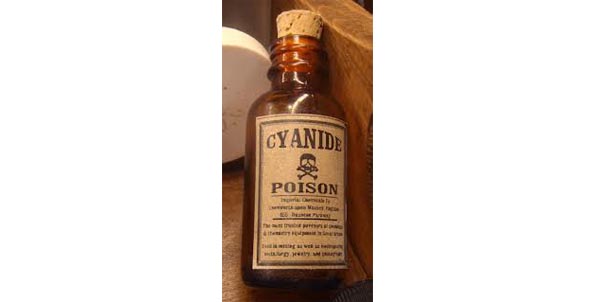
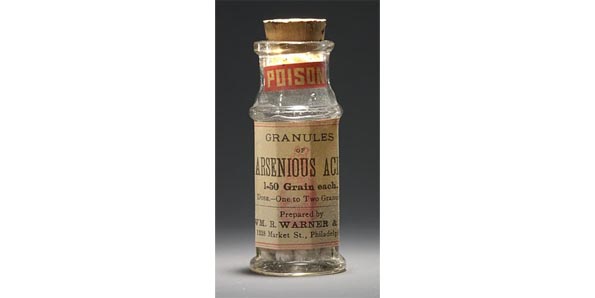
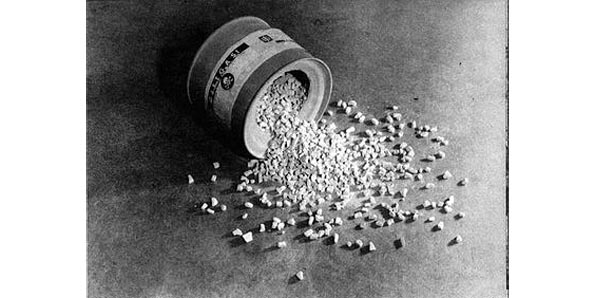
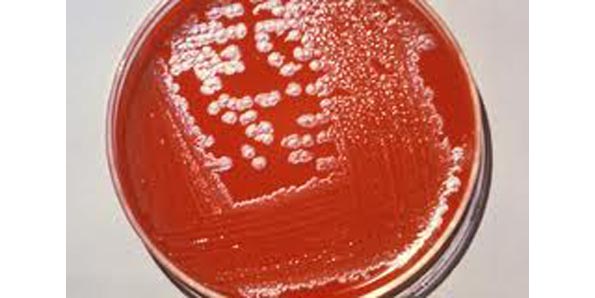

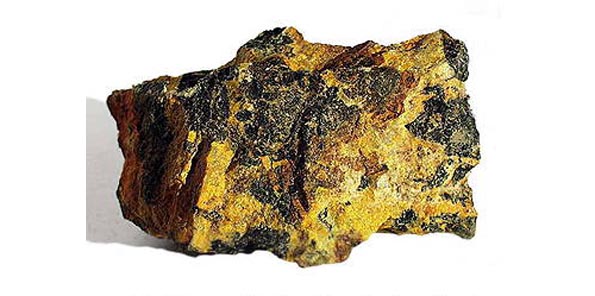
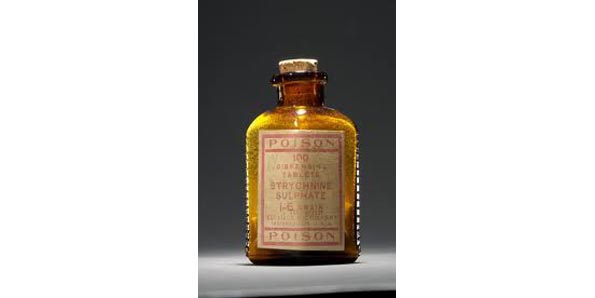


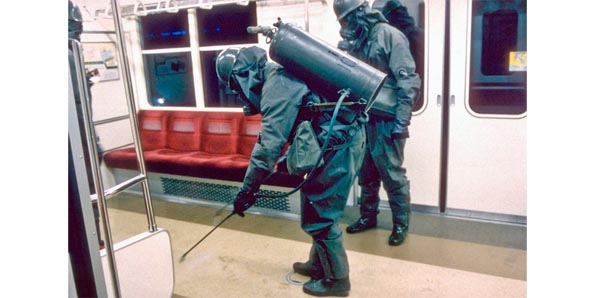
Actualy, botulinum toxin is probably the most fatal toxin known to man with it being fatal at 1 billionth of a gram per kilogram of body mass
Wrong. The worlds deadliest poison is clostridium botchulinum.
What was the name of the gas that killed all those people in India ? .
It leaked out of a Bocal fertilizer plant.
I’d also have Potassium Cyanide and Thallium compounds on the list as well.
alo 789: alo789in – alo789 chinh th?c
http://interpharmonline.com/# is canadian pharmacy legit
canadian pharmacy near me
online pharmacy india: online pharmacy india – cheapest online pharmacy india
https://mexicanpharminter.shop/# reliable mexican pharmacies
buy prescription drugs from canada cheap
http://mexicanpharminter.com/# mexican pharmacy online order
Mexican Pharm Inter: mexican pharmacy online – buying from online mexican pharmacy
http://mexicanpharminter.com/# Mexican Pharm Inter
canadian pharmacy drugs online
reliable mexican pharmacies [url=http://mexicanpharminter.com/#]reliable mexican pharmacies[/url] mexican pharmacy online order
best canadian pharmacy online: certified canada pharmacy online – canada discount pharmacy
https://mexicanpharminter.shop/# mexican pharmacy online
my canadian pharmacy review
https://interpharmonline.shop/# certified canadian international pharmacy
buying prescription drugs from india [url=https://indiamedfast.com/#]india pharmacy without prescription[/url] IndiaMedFast.com
http://interpharmonline.com/# canadian king pharmacy
canadian pharmacy meds reviews
https://mexicanpharminter.shop/# MexicanPharmInter
canadian online pharmacy: InterPharmOnline.com – canada cloud pharmacy
https://mexicanpharminter.shop/# mexican pharmacy online order
canadian pharmacy near me
http://mexicanpharminter.com/# MexicanPharmInter
india pharmacy without prescription [url=https://indiamedfast.com/#]order medicines online india[/url] india pharmacy without prescription
safe canadian pharmacy: highest rated canadian online pharmacy – canadian pharmacies compare
cheapest online pharmacy india: online medicine shopping in india – online medicine shopping in india
https://interpharmonline.shop/# legitimate canadian pharmacies
canadian pharmacy store
http://interpharmonline.com/# canadian pharmacy tampa
http://interpharmonline.com/# certified canadian pharmacy
canadian pharmacy oxycodone
canadian drug pharmacy: InterPharmOnline.com – canadian 24 hour pharmacy
canadian online pharmacy reviews: highest rated canadian online pharmacy – real canadian pharmacy
TadalafilEasyBuy.com [url=https://tadalafileasybuy.com/#]cialis without a doctor prescription[/url] TadalafilEasyBuy.com
https://generic100mgeasy.shop/# Generic100mgEasy
https://kamagrakopen.pro/# Officiele Kamagra van Nederland
Generic100mgEasy: Generic100mgEasy – Generic100mgEasy
https://kamagrakopen.pro/# kamagra 100mg kopen
Buy Tadalafil 5mg [url=http://tadalafileasybuy.com/#]Buy Tadalafil 5mg[/url] Tadalafil Easy Buy
https://kamagrakopen.pro/# Kamagra Kopen Online
kamagra kopen nederland: KamagraKopen.pro – kamagra 100mg kopen
https://kamagrakopen.pro/# kamagra gel kopen
http://generic100mgeasy.com/# Generic100mgEasy
buy generic 100mg viagra online [url=http://generic100mgeasy.com/#]order viagra[/url] buy generic 100mg viagra online
https://kamagrakopen.pro/# kamagra jelly kopen
TadalafilEasyBuy.com: Tadalafil Easy Buy – TadalafilEasyBuy.com
https://kamagrakopen.pro/# Kamagra
https://generic100mgeasy.com/# buy generic 100mg viagra online
Cheap generic Viagra [url=https://generic100mgeasy.com/#]buy generic 100mg viagra online[/url] buy generic 100mg viagra online
Kamagra Kopen Online: kamagra 100mg kopen – Officiele Kamagra van Nederland
https://tadalafileasybuy.shop/# TadalafilEasyBuy.com
https://kamagrakopen.pro/# Kamagra Kopen
Kamagra Kopen: KamagraKopen.pro – KamagraKopen.pro
kamagra gel kopen [url=https://kamagrakopen.pro/#]kamagra kopen nederland[/url] KamagraKopen.pro
Tadalafil Easy Buy: Generic Cialis without a doctor prescription – Tadalafil Easy Buy
https://tadalafileasybuy.com/# TadalafilEasyBuy.com
https://tadalafileasybuy.com/# cialis without a doctor prescription
kamagra kopen nederland: kamagra kopen nederland – kamagra jelly kopen
https://kamagrakopen.pro/# Kamagra
https://generic100mgeasy.com/# Generic100mgEasy
Cialis 20mg price [url=http://tadalafileasybuy.com/#]TadalafilEasyBuy.com[/url] cialis without a doctor prescription
http://generic100mgeasy.com/# buy generic 100mg viagra online
https://generic100mgeasy.shop/# Generic 100mg Easy
http://generic100mgeasy.com/# Cheapest Sildenafil online
buy generic 100mg viagra online: Generic100mgEasy – Generic 100mg Easy
http://tadalafileasybuy.com/# TadalafilEasyBuy.com
TadalafilEasyBuy.com [url=http://tadalafileasybuy.com/#]Tadalafil Easy Buy[/url] cialis without a doctor prescription
https://tadalafileasybuy.shop/# Tadalafil Easy Buy
пин ап вход – пин ап казино официальный сайт
пинап казино – пин ап вход
пин ап – пин ап казино
пин ап вход – пин ап
пин ап зеркало – пин ап казино официальный сайт
пин ап казино официальный сайт – пин ап казино зеркало
пин ап – пин ап зеркало
Generic100mgEasy [url=https://generic100mgeasy.shop/#]Generic 100mg Easy[/url] buy generic 100mg viagra online
пин ап казино – пин ап казино официальный сайт
пин ап казино зеркало – пин ап казино зеркало
пин ап казино зеркало – пин ап казино зеркало
Tadalafil Easy Buy [url=https://tadalafileasybuy.com/#]cheapest cialis[/url] Tadalafil Easy Buy
pinup 2025 – пинап казино
пин ап казино зеркало – пинап казино
пин ап казино – пин ап зеркало
пин ап зеркало – пин ап зеркало
Kamagra Oral Jelly kaufen: Kamagra Oral Jelly kaufen – Kamagra kaufen ohne Rezept
Beste online drogist: Beste online drogist – Online apotheek Nederland met recept
Beste online drogist [url=https://apotheekmax.shop/#]Apotheek Max[/url] Beste online drogist
Apotheek Max: Beste online drogist – Beste online drogist
apotek online recept: Apotek hemleverans idag – Apotek hemleverans recept
http://kamagrapotenzmittel.com/# Kamagra kaufen
Apotek hemleverans idag: Apotek hemleverans recept – apotek pa nett
Apotek hemleverans recept [url=https://apotekonlinerecept.com/#]apotek pa nett[/url] apotek online recept
Apotek hemleverans idag: Apotek hemleverans recept – Apotek hemleverans idag
https://apotekonlinerecept.com/# Apotek hemleverans recept
Apotek hemleverans idag: apotek pa nett – Apoteket online
Online apotheek Nederland met recept: online apotheek – Apotheek online bestellen
Kamagra Gel [url=https://kamagrapotenzmittel.com/#]Kamagra Gel[/url] Kamagra kaufen
Apotheek online bestellen: Apotheek online bestellen – Apotheek online bestellen
Apotek hemleverans recept: apotek online recept – apotek online
ApotheekMax: Betrouwbare online apotheek zonder recept – ApotheekMax
http://apotekonlinerecept.com/# Apoteket online
de online drogist kortingscode [url=https://apotheekmax.com/#]de online drogist kortingscode[/url] ApotheekMax
Apotheek Max: Apotheek online bestellen – Apotheek Max
Kamagra Oral Jelly: Kamagra Gel – Kamagra kaufen
https://apotheekmax.shop/# Betrouwbare online apotheek zonder recept
de online drogist kortingscode: Online apotheek Nederland met recept – Beste online drogist
Apoteket online [url=https://apotekonlinerecept.com/#]Apotek hemleverans recept[/url] apotek online recept
online apotheek: Online apotheek Nederland zonder recept – Betrouwbare online apotheek zonder recept
Kamagra kaufen ohne Rezept: Kamagra Oral Jelly kaufen – Kamagra Gel
https://kamagrapotenzmittel.shop/# Kamagra kaufen
http://apotekonlinerecept.com/# Apotek hemleverans recept
https://apotekonlinerecept.shop/# Apotek hemleverans recept
Kamagra Oral Jelly kaufen [url=https://kamagrapotenzmittel.shop/#]Kamagra Oral Jelly kaufen[/url] kamagra
Apotek hemleverans idag: Apotek hemleverans recept – Apoteket online
https://apotheekmax.shop/# de online drogist kortingscode
Kamagra Gel: Kamagra Gel – Kamagra kaufen ohne Rezept
Kamagra Oral Jelly: Kamagra kaufen – Kamagra Gel
https://apotheekmax.shop/# Beste online drogist
Apotek hemleverans recept [url=http://apotekonlinerecept.com/#]Apotek hemleverans idag[/url] Apotek hemleverans recept
https://kamagrapotenzmittel.com/# Kamagra Original
canadian world pharmacy: canada discount pharmacy – my canadian pharmacy review
https://gocanadapharm.shop/# canadian pharmacy no scripts
www india pharm [url=https://wwwindiapharm.com/#]pharmacy website india[/url] cheapest online pharmacy india
Agb Mexico Pharm: Agb Mexico Pharm – best online pharmacies in mexico
buy medicines online in india: pharmacy website india – www india pharm
Agb Mexico Pharm: medicine in mexico pharmacies – Agb Mexico Pharm
http://agbmexicopharm.com/# Agb Mexico Pharm
Agb Mexico Pharm: Agb Mexico Pharm – Agb Mexico Pharm
online pharmacy india [url=http://wwwindiapharm.com/#]www india pharm[/url] best online pharmacy india
mexican border pharmacies shipping to usa: Agb Mexico Pharm – buying prescription drugs in mexico
https://agbmexicopharm.com/# mexican mail order pharmacies
www india pharm: www india pharm – www india pharm
top 10 pharmacies in india: www india pharm – п»їlegitimate online pharmacies india
mexican mail order pharmacies: Agb Mexico Pharm – buying from online mexican pharmacy
canadian pharmacy world: GoCanadaPharm – canadapharmacyonline legit
https://wwwindiapharm.shop/# india pharmacy mail order
Agb Mexico Pharm: mexican rx online – Agb Mexico Pharm
mexican drugstore online: medication from mexico pharmacy – reputable mexican pharmacies online
canadian pharmacy ltd: GoCanadaPharm – reddit canadian pharmacy
Agb Mexico Pharm [url=https://agbmexicopharm.shop/#]best online pharmacies in mexico[/url] Agb Mexico Pharm
www india pharm: Online medicine home delivery – www india pharm
mexican drugstore online: Agb Mexico Pharm – buying prescription drugs in mexico
https://agbmexicopharm.shop/# mexican pharmaceuticals online
cheapest online pharmacy india: www india pharm – www india pharm
mexico pharmacies prescription drugs: Agb Mexico Pharm – Agb Mexico Pharm
https://gocanadapharm.com/# canadianpharmacymeds com
online shopping pharmacy india [url=http://wwwindiapharm.com/#]www india pharm[/url] indianpharmacy com
cheap canadian pharmacy: go canada pharm – online pharmacy canada
cross border pharmacy canada: GoCanadaPharm – canadian family pharmacy
http://wwwindiapharm.com/# www india pharm
mexican rx online: mexican border pharmacies shipping to usa – Agb Mexico Pharm
canadian pharmacy meds review: go canada pharm – legit canadian online pharmacy
www india pharm: world pharmacy india – indian pharmacy online
buying prescription drugs in mexico [url=https://agbmexicopharm.com/#]Agb Mexico Pharm[/url] medicine in mexico pharmacies
http://agbmexicopharm.com/# medication from mexico pharmacy
ZithPharmOnline: ZithPharmOnline – ZithPharmOnline
buy zithromax 1000 mg online: buy zithromax 1000mg online – zithromax 500mg price
https://zithpharmonline.com/# buy zithromax without prescription online
Lisin Express: lisinopril 20mg for sale – cost of lisinopril
ZithPharmOnline: ZithPharmOnline – ZithPharmOnline
http://zithpharmonline.com/# ZithPharmOnline
Clom Fast Pharm: Clom Fast Pharm – can you get generic clomid online
ZithPharmOnline: ZithPharmOnline – ZithPharmOnline
ZithPharmOnline [url=http://zithpharmonline.com/#]ZithPharmOnline[/url] zithromax price south africa
http://lisinexpress.com/# lisinopril buy without prescription
ZithPharmOnline: ZithPharmOnline – ZithPharmOnline
prednisone price south africa: Pred Pharm Net – prednisone without rx
http://lisinexpress.com/# Lisin Express
buy lisinopril online no prescription: lisinopril from canada – buy lisinopril 20 mg online uk
where can i get amoxicillin 500 mg: AmOnlinePharm – AmOnlinePharm
Pred Pharm Net [url=https://predpharmnet.com/#]Pred Pharm Net[/url] buy prednisone online fast shipping
AmOnlinePharm: AmOnlinePharm – amoxicillin 500mg capsules antibiotic
http://clomfastpharm.com/# where can i get cheap clomid
Clom Fast Pharm: Clom Fast Pharm – order generic clomid
Pred Pharm Net: prednisone uk over the counter – prednisone 10mg
https://clomfastpharm.com/# can you buy generic clomid without insurance
purchase amoxicillin online without prescription [url=https://amonlinepharm.com/#]AmOnlinePharm[/url] amoxicillin 875 mg tablet
Clom Fast Pharm: Clom Fast Pharm – Clom Fast Pharm
order generic clomid for sale: where can i buy cheap clomid – Clom Fast Pharm
https://zithpharmonline.com/# zithromax generic price
where to buy zithromax in canada: zithromax without prescription – where can i buy zithromax medicine
Lisin Express [url=https://lisinexpress.com/#]zestril medicine[/url] lisinopril 422
Lisin Express: Lisin Express – Lisin Express
http://lisinexpress.com/# lisinopril tabs 4mg
ZithPharmOnline: ZithPharmOnline – zithromax cost uk
ZithPharmOnline: zithromax z-pak – zithromax buy
amoxicillin no prescipion: AmOnlinePharm – AmOnlinePharm
https://clomfastpharm.shop/# Clom Fast Pharm
AmOnlinePharm: AmOnlinePharm – prescription for amoxicillin
Pred Pharm Net [url=http://predpharmnet.com/#]buy prednisone 10mg[/url] can i order prednisone
http://amonlinepharm.com/# AmOnlinePharm
Clom Fast Pharm: how can i get cheap clomid without prescription – Clom Fast Pharm
https://sweetbonanza1st.shop/# sweet bonanza yorumlar
en gГјvenilir yatД±rД±m siteleri [url=http://casibom1st.com/#]casibom guncel giris[/url] ilk giriЕџte bonus veren bahis siteleri casibom1st.shop
casino siteleri: guvenilir casino siteleri – casino siteleri 2025 casinositeleri1st.com
sweet bonanza demo: sweet bonanza oyna – sweet bonanza slot sweetbonanza1st.shop
en gГјvenilir casino siteleri: casibom giris – en Г§ok kazandД±ran bahis siteleri casibom1st.com
yeni+deneme+bonusu: casibom giris adresi – oyun dene casibom1st.com
en gГјvenilir site [url=https://casibom1st.com/#]casibom giris[/url] casino slot oyunlarД± casibom1st.shop
sweet bonanza siteleri: sweet bonanza slot – sweet bonanza demo sweetbonanza1st.shop
sweet bonanza giris: sweet bonanza siteleri – sweet bonanza slot sweetbonanza1st.shop
https://sweetbonanza1st.com/# sweet bonanza yorumlar
sweet bonanza slot: sweet bonanza slot – sweet bonanza oyna sweetbonanza1st.shop
sweet bonanza oyna [url=https://sweetbonanza1st.com/#]sweet bonanza 1st[/url] sweet bonanza slot sweetbonanza1st.com
sweet bonanza yorumlar: sweet bonanza – sweet bonanza yorumlar sweetbonanza1st.shop
slot casino siteleri: casino siteleri 2025 – slot casino siteleri casinositeleri1st.com
kumar oynama siteleri: casibom mobil giris – bonus veren yasal bahis siteleri casibom1st.com
casino slot oyunlarД±: casibom giris adresi – gercek para kazandД±ran casino oyunlarД± casibom1st.com
bahis giriЕџ: casibom resmi – bahis siteleei casibom1st.com
yeni bahis siteleri deneme bonusu [url=https://casibom1st.com/#]casibom resmi[/url] gazino isimleri casibom1st.shop
pronet giriЕџ: casibom – kaГ§ak bahis siteleri bonus veren casibom1st.com
sweet bonanza 1st: sweet bonanza yorumlar – sweet bonanza demo sweetbonanza1st.shop
by casino: casibom resmi – casino bet gГјncel giriЕџ casibom1st.com
bet bahis giriЕџ [url=http://casibom1st.com/#]casibom giris[/url] sГјperbetine casibom1st.shop
http://sweetbonanza1st.com/# sweet bonanza
sweet bonanza giris: sweet bonanza demo – sweet bonanza 1st sweetbonanza1st.shop
sweet bonanza giris: sweet bonanza 1st – sweet bonanza slot sweetbonanza1st.shop
sweet bonanza slot: sweet bonanza slot – sweet bonanza slot sweetbonanza1st.shop
slot oyunlarД±nda en Г§ok kazandД±ran oyun [url=http://casibom1st.com/#]casibom guncel giris[/url] bonus slot casibom1st.shop
sweet bonanza demo: sweet bonanza 1st – sweet bonanza siteleri sweetbonanza1st.shop
http://sweetbonanza1st.com/# sweet bonanza 1st
cazinomaxi: casibom guncel giris – bonus slot casibom1st.com
bonus veren siteler: guvenilir casino siteleri – lisansl? casino siteleri casinositeleri1st.com
USMexPharm [url=https://usmexpharm.com/#]mexican pharmacy[/url] certified Mexican pharmacy
https://usmexpharm.com/# UsMex Pharm
UsMex Pharm: USMexPharm – mexican pharmacy
certified Mexican pharmacy: USMexPharm – mexican pharmacy
https://usmexpharm.com/# Us Mex Pharm
mexican pharmacy: UsMex Pharm – USMexPharm
certified Mexican pharmacy: USMexPharm – certified Mexican pharmacy
Mexican pharmacy ship to USA [url=https://usmexpharm.shop/#]mexican pharmacy[/url] mexican pharmacy
mexican pharmacy: mexican pharmacy – Us Mex Pharm
https://usmexpharm.com/# usa mexico pharmacy
mexican pharmacy: certified Mexican pharmacy – usa mexico pharmacy
USMexPharm [url=https://usmexpharm.com/#]Us Mex Pharm[/url] USMexPharm
usa mexico pharmacy: reputable mexican pharmacies online – mexican border pharmacies shipping to usa
https://usmexpharm.shop/# Mexican pharmacy ship to USA
USMexPharm: certified Mexican pharmacy – pharmacies in mexico that ship to usa
mexican pharmacy: certified Mexican pharmacy – usa mexico pharmacy
https://usmexpharm.com/# USMexPharm
Us Mex Pharm: mexican rx online – Us Mex Pharm
certified Mexican pharmacy: Us Mex Pharm – certified Mexican pharmacy
Mexican pharmacy ship to USA [url=http://usmexpharm.com/#]USMexPharm[/url] USMexPharm
http://usmexpharm.com/# UsMex Pharm
Mexican pharmacy ship to USA: Mexican pharmacy ship to USA – Us Mex Pharm
UsMex Pharm: mexican mail order pharmacies – certified Mexican pharmacy
Mexican pharmacy ship to USA: Us Mex Pharm – mexican mail order pharmacies
UsMex Pharm: Mexican pharmacy ship to USA – Mexican pharmacy ship to USA
USMexPharm [url=http://usmexpharm.com/#]UsMex Pharm[/url] UsMex Pharm
UsMex Pharm: Us Mex Pharm – Us Mex Pharm
UsMex Pharm: mexico drug stores pharmacies – UsMex Pharm
https://usaindiapharm.com/# indian pharmacy online
UsaIndiaPharm: UsaIndiaPharm – USA India Pharm
mail order pharmacy india: UsaIndiaPharm – best online pharmacy india
indianpharmacy com [url=http://usaindiapharm.com/#]UsaIndiaPharm[/url] buy medicines online in india
https://usaindiapharm.shop/# USA India Pharm
UsaIndiaPharm: UsaIndiaPharm – UsaIndiaPharm
UsaIndiaPharm: pharmacy website india – UsaIndiaPharm
http://usaindiapharm.com/# indianpharmacy com
indian pharmacy paypal: india pharmacy – online pharmacy india
indian pharmacies safe: UsaIndiaPharm – indian pharmacy
USA India Pharm [url=http://usaindiapharm.com/#]USA India Pharm[/url] п»їlegitimate online pharmacies india
Online medicine home delivery: best india pharmacy – USA India Pharm
http://usaindiapharm.com/# п»їlegitimate online pharmacies india
USA India Pharm: top online pharmacy india – Online medicine home delivery
UsaIndiaPharm: UsaIndiaPharm – buy prescription drugs from india
USA India Pharm [url=https://usaindiapharm.shop/#]UsaIndiaPharm[/url] UsaIndiaPharm
http://usaindiapharm.com/# top 10 online pharmacy in india
USA India Pharm: india pharmacy mail order – USA India Pharm
top 10 online pharmacy in india: UsaIndiaPharm – top 10 pharmacies in india
https://usaindiapharm.shop/# UsaIndiaPharm
indian pharmacy paypal: top online pharmacy india – UsaIndiaPharm
UsaIndiaPharm: UsaIndiaPharm – USA India Pharm
UsaIndiaPharm [url=https://usaindiapharm.com/#]top 10 pharmacies in india[/url] USA India Pharm
online pharmacy india: UsaIndiaPharm – USA India Pharm
https://usaindiapharm.com/# top 10 online pharmacy in india
Online medicine home delivery: Online medicine home delivery – best india pharmacy
USA India Pharm: UsaIndiaPharm – п»їlegitimate online pharmacies india
UsaIndiaPharm: online pharmacy india – UsaIndiaPharm
https://usaindiapharm.com/# Online medicine home delivery
USA India Pharm: indianpharmacy com – pharmacy website india
indian pharmacy [url=http://usaindiapharm.com/#]п»їlegitimate online pharmacies india[/url] best online pharmacy india
UsaIndiaPharm: UsaIndiaPharm – USA India Pharm
п»їlegitimate online pharmacies india: UsaIndiaPharm – world pharmacy india
https://usaindiapharm.com/# Online medicine order
USA India Pharm: USA India Pharm – USA India Pharm
UsaIndiaPharm: best online pharmacy india – best india pharmacy
mail order pharmacy india: UsaIndiaPharm – UsaIndiaPharm
USA India Pharm [url=https://usaindiapharm.com/#]Online medicine home delivery[/url] india pharmacy
https://usaindiapharm.shop/# UsaIndiaPharm
UsaIndiaPharm: UsaIndiaPharm – reputable indian online pharmacy
pharmacy website india: buy prescription drugs from india – india pharmacy
UsaIndiaPharm: UsaIndiaPharm – UsaIndiaPharm
https://usaindiapharm.com/# USA India Pharm
india online pharmacy: top 10 pharmacies in india – USA India Pharm
indian pharmacies safe: india pharmacy – reputable indian pharmacies
Online medicine order: USA India Pharm – USA India Pharm
india online pharmacy [url=http://usaindiapharm.com/#]USA India Pharm[/url] world pharmacy india
https://usacanadapharm.com/# USACanadaPharm
usa canada pharm: canadian pharmacies compare – cheap canadian pharmacy
certified canadian international pharmacy: usa canada pharm – usa canada pharm
pet meds without vet prescription canada [url=https://usacanadapharm.com/#]USACanadaPharm[/url] legal canadian pharmacy online
usa canada pharm: USACanadaPharm – USACanadaPharm
http://usacanadapharm.com/# USACanadaPharm
canada pharmacy world: usa canada pharm – usa canada pharm
usa canada pharm: USACanadaPharm – usa canada pharm
usa canada pharm: buy drugs from canada – USACanadaPharm
https://usacanadapharm.shop/# USACanadaPharm
USACanadaPharm [url=https://usacanadapharm.com/#]canadian pharmacy 24[/url] usa canada pharm
usa canada pharm: USACanadaPharm – usa canada pharm
USACanadaPharm: online canadian pharmacy reviews – legal canadian pharmacy online
https://usacanadapharm.shop/# legitimate canadian pharmacy
usa canada pharm: usa canada pharm – canadapharmacyonline legit
cross border pharmacy canada: pharmacy canadian – real canadian pharmacy
canadian pharmacy ltd [url=http://usacanadapharm.com/#]USACanadaPharm[/url] USACanadaPharm
http://usacanadapharm.com/# USACanadaPharm
USACanadaPharm: USACanadaPharm – canadian pharmacy checker
http://usacanadapharm.com/# reliable canadian online pharmacy
usa canada pharm: USACanadaPharm – usa canada pharm
https://usacanadapharm.shop/# USACanadaPharm
usa canada pharm: canadian drug pharmacy – canadian pharmacy king
safe canadian pharmacy http://usacanadapharm.com/# usa canada pharm
buy canadian drugs
USACanadaPharm [url=http://usacanadapharm.com/#]usa canada pharm[/url] USACanadaPharm
canadian pharmacy no rx needed: canadian pharmacy near me – usa canada pharm
http://usacanadapharm.com/# USACanadaPharm
https://usacanadapharm.shop/# USACanadaPharm
usa canada pharm [url=http://usacanadapharm.com/#]reliable canadian pharmacy[/url] USACanadaPharm
usa canada pharm: usa canada pharm – canadian pharmacy victoza
http://usacanadapharm.com/# usa canada pharm
olympe casino en ligne: olympe casino avis – olympe casino en ligne
https://olympecasino.pro/# olympe casino
[url=https://olympecasino.pro/#]olympe casino[/url] olympe
https://olympecasino.pro/# olympe
[url=https://olympecasino.pro/#]casino olympe[/url] olympe casino avis
https://olympecasino.pro/# olympe casino avis
[url=https://olympecasino.pro/#]olympe casino cresus[/url] olympe casino cresus
[url=https://olympecasino.pro/#]olympe casino cresus[/url] olympe casino avis
[url=https://olympecasino.pro/#]olympe casino en ligne[/url] olympe
[url=https://olympecasino.pro/#]olympe casino cresus[/url] olympe casino en ligne
[url=https://olympecasino.pro/#]olympe casino[/url] olympe
[url=https://olympecasino.pro/#]olympe casino cresus[/url] olympe casino
[url=https://olympecasino.pro/#]olympe[/url] olympe casino cresus
olympe casino avis: olympe – olympe casino en ligne
https://olympecasino.pro/# olympe
[url=https://olympecasino.pro/#]olympe casino[/url] olympe casino avis
olympe casino avis: olympe casino avis – olympe casino cresus
[url=https://olympecasino.pro/#]olympe casino cresus[/url] olympe casino
olympe casino cresus: olympe casino – olympe casino en ligne
[url=https://olympecasino.pro/#]olympe casino[/url] olympe casino en ligne
[url=https://olympecasino.pro/#]olympe casino[/url] casino olympe
[url=https://olympecasino.pro/#]olympe casino cresus[/url] olympe casino en ligne
olympe casino: olympe – olympe casino avis
[url=https://olympecasino.pro/#]olympe casino cresus[/url] olympe casino cresus
olympe: olympe casino – olympe casino
https://olympecasino.pro/# casino olympe
[url=https://olympecasino.pro/#]olympe casino en ligne[/url] olympe casino
olympe casino avis: olympe casino cresus – olympe casino avis
[url=https://olympecasino.pro/#]olympe[/url] casino olympe
olympe casino cresus: olympe casino cresus – casino olympe
[url=https://olympecasino.pro/#]casino olympe[/url] olympe casino en ligne
[url=https://olympecasino.pro/#]olympe casino avis[/url] olympe casino avis
olympe casino: olympe casino avis – olympe casino avis
[url=https://olympecasino.pro/#]olympe casino avis[/url] olympe casino avis
olympe casino cresus: casino olympe – olympe casino en ligne
olympe: olympe casino en ligne – casino olympe
https://olympecasino.pro/# olympe casino
[url=https://olympecasino.pro/#]olympe casino en ligne[/url] olympe casino
kamagra 100mg prix [url=https://kamagraprix.shop/#]kamagra en ligne[/url] achat kamagra
https://kamagraprix.com/# Acheter Kamagra site fiable
https://pharmafst.com/# pharmacie en ligne france fiable
pharmacie en ligne sans ordonnance [url=http://pharmafst.com/#]Pharmacies en ligne certifiees[/url] pharmacie en ligne france livraison belgique pharmafst.shop
https://tadalmed.shop/# Cialis sans ordonnance 24h
Pharmacie sans ordonnance [url=https://pharmafst.shop/#]Medicaments en ligne livres en 24h[/url] Pharmacie en ligne livraison Europe pharmafst.shop
Achat mГ©dicament en ligne fiable: pharmacie en ligne pas cher – pharmacie en ligne pharmafst.com
https://tadalmed.shop/# Tadalafil achat en ligne
Acheter Cialis [url=http://tadalmed.com/#]Acheter Cialis[/url] cialis prix tadalmed.com
http://pharmafst.com/# Pharmacie en ligne livraison Europe
cialis generique [url=https://tadalmed.com/#]Cialis sans ordonnance 24h[/url] Cialis sans ordonnance pas cher tadalmed.com
http://pharmafst.com/# pharmacie en ligne france livraison belgique
pharmacie en ligne fiable [url=https://pharmafst.com/#]pharmacie en ligne pas cher[/url] pharmacie en ligne avec ordonnance pharmafst.shop
Acheter Kamagra site fiable: kamagra 100mg prix – Kamagra Commander maintenant
http://tadalmed.com/# cialis generique
Acheter Kamagra site fiable [url=https://kamagraprix.com/#]Achetez vos kamagra medicaments[/url] kamagra gel
Tadalafil sans ordonnance en ligne: Tadalafil achat en ligne – Achat Cialis en ligne fiable tadalmed.shop
pharmacie en ligne france fiable: pharmacie en ligne – vente de mГ©dicament en ligne pharmafst.com
https://pharmafst.shop/# pharmacie en ligne sans ordonnance
cialis generique: cialis sans ordonnance – cialis sans ordonnance tadalmed.shop
kamagra gel: kamagra gel – acheter kamagra site fiable
pharmacie en ligne fiable: Medicaments en ligne livres en 24h – pharmacie en ligne france fiable pharmafst.com
Kamagra pharmacie en ligne: Kamagra Oral Jelly pas cher – Kamagra Commander maintenant
acheter kamagra site fiable: kamagra pas cher – Acheter Kamagra site fiable
pharmacies en ligne certifiГ©es: pharmacie en ligne sans ordonnance – pharmacie en ligne france livraison belgique pharmafst.com
https://pharmafst.com/# Achat mГ©dicament en ligne fiable
cialis sans ordonnance: cialis generique – Cialis en ligne tadalmed.shop
http://kamagraprix.com/# acheter kamagra site fiable
Achat mГ©dicament en ligne fiable: Pharmacies en ligne certifiees – trouver un mГ©dicament en pharmacie pharmafst.com
kamagra oral jelly: Kamagra Commander maintenant – kamagra 100mg prix
https://pharmafst.com/# Pharmacie en ligne livraison Europe
Pharmacie Internationale en ligne: Pharmacie en ligne France – pharmacie en ligne france livraison belgique pharmafst.com
Acheter Cialis: Tadalafil 20 mg prix sans ordonnance – Tadalafil 20 mg prix sans ordonnance tadalmed.shop
Kamagra pharmacie en ligne: acheter kamagra site fiable – kamagra en ligne
Tadalafil sans ordonnance en ligne: Cialis en ligne – Tadalafil 20 mg prix en pharmacie tadalmed.shop
https://pharmafst.com/# pharmacies en ligne certifiГ©es
Tadalafil 20 mg prix sans ordonnance: Cialis sans ordonnance pas cher – cialis sans ordonnance tadalmed.shop
Kamagra Oral Jelly pas cher: kamagra oral jelly – acheter kamagra site fiable
pharmacie en ligne pas cher: pharmacie en ligne sans ordonnance – pharmacie en ligne livraison europe pharmafst.com
Achat Cialis en ligne fiable: Cialis sans ordonnance pas cher – cialis prix tadalmed.shop
https://kamagraprix.com/# Kamagra pharmacie en ligne
http://kamagraprix.com/# Achetez vos kamagra medicaments
http://pharmafst.com/# pharmacie en ligne pas cher
https://tadalmed.shop/# Cialis sans ordonnance 24h
kamagra pas cher: acheter kamagra site fiable – Achetez vos kamagra medicaments
п»їpharmacie en ligne france: pharmacie en ligne france pas cher – vente de mГ©dicament en ligne pharmafst.com
This is a topic which is close to my heart…
Best wishes! Where are your contact details though?
Also visit my web blog: nordvpn coupons inspiresensation
Thanks for sharing your info. I truly appreciate your
efforts and I am waiting for your next post thanks once again.
my blog :: Nordvpn Coupons inspiresensation
Spot on with this write-up, I absolutely think this amazing site needs a great deal
more attention. I’ll probably be back again to read through more, thanks for the info!
Feel free to surf to my web page nordvpn coupons inspiresensation
nordvpn special coupon code 2025
350fairfax
I really like it when folks get together and share opinions.
Great blog, continue the good work!
I simply couldn’t go away your site prior to suggesting that I really loved the standard info an individual supply on your
guests? Is going to be again incessantly in order to inspect
new posts
Also visit my web blog – eharmony special coupon code 2025
Remarkable! Its in fact amazing article, I have got much clear idea about from
this post.
my web page vpn
Amazing things here. I’m very satisfied to look your post.
Thank you so much and I’m taking a look forward to contact you.
Will you kindly drop me a mail? gamefly 3 month free trial https://tinyurl.com/2ah5u2sb
Hello every one, here every person is sharing such experience, thus it’s nice to read this blog, and I used to
pay a quick visit this blog every day. https://tinyurl.com/2ytofo73 what is vpn protection
Thank you for the auspicious writeup. It in reality used to be a amusement account it.
Glance advanced to far brought agreeable from
you! However, how can we keep up a correspondence?
Do you have a spam problem on this blog; I also am a blogger, and I
was wanting to know your situation; many of us have created some nice methods and we are looking to exchange techniques
with other folks, why not shoot me an e-mail if interested.
Good ? I should definitely pronounce, impressed with your site. I had no trouble navigating through all the tabs as well as related info ended up being truly simple to do to access. I recently found what I hoped for before you know it in the least. Quite unusual. Is likely to appreciate it for those who add forums or something, site theme . a tones way for your client to communicate. Nice task..
Hello, i read your blog from time to time and i own a similar one and i was just curious if you get a lot of spam responses? If so how do you protect against it, any plugin or anything you can recommend? I get so much lately it’s driving me insane so any help is very much appreciated.
Wonderful work! This is the type of information that should be shared around the internet. Shame on the search engines for not positioning this post higher! Come on over and visit my web site . Thanks =)
Excelent post. I was checking constantly this blog and I am impressed!
Extremely useful information particularly the last part 🙂 I care for such information a lot.
I was looking for this particular info for a long time.
Thank you and best of luck. https://Glassi-app.blogspot.com/2025/08/how-to-download-glassi-casino-app-for.html
Good write-up, I?m normal visitor of one?s blog, maintain up the nice operate, and It is going to be a regular visitor for a long time.
I have witnessed that clever real estate agents everywhere you go are Advertising and marketing. They are knowing that it’s not just placing a sign post in the front place. It’s really concerning building interactions with these suppliers who at some point will become purchasers. So, when you give your time and effort to supporting these traders go it alone – the “Law involving Reciprocity” kicks in. Thanks for your blog post.
affordablecanvaspaintings.com.au is Australia Popular Online 100 percent Handmade Art Store. We deliver Budget Handmade Canvas Paintings, Abstract Art, Oil Paintings, Artwork Sale, Acrylic Wall Art Paintings, Custom Art, Oil Portraits, Pet Paintings, Building Paintings etc. 1000+ Designs To Choose From, Highly Experienced Artists team, Up-to 50 percent OFF SALE and FREE Delivery Australia, Sydney, Melbourne, Brisbane, Adelaide, Hobart and all regional areas. We ship worldwide international locations. Order Online Your Handmade Art Today.
I am extremely impressed along with your writing abilities as smartly as with the format on your blog. Is this a paid subject or did you customize it your self? Either way stay up the nice quality writing, it?s rare to see a great blog like this one today..